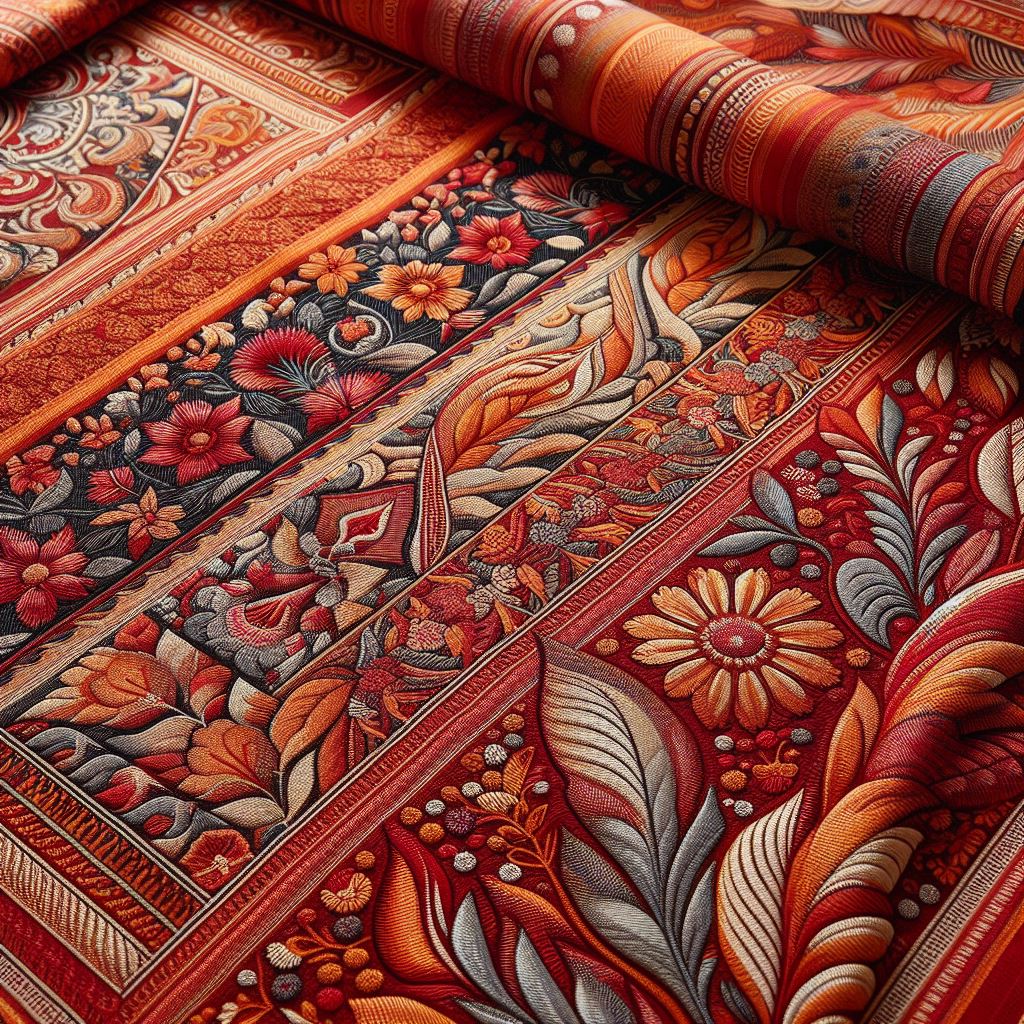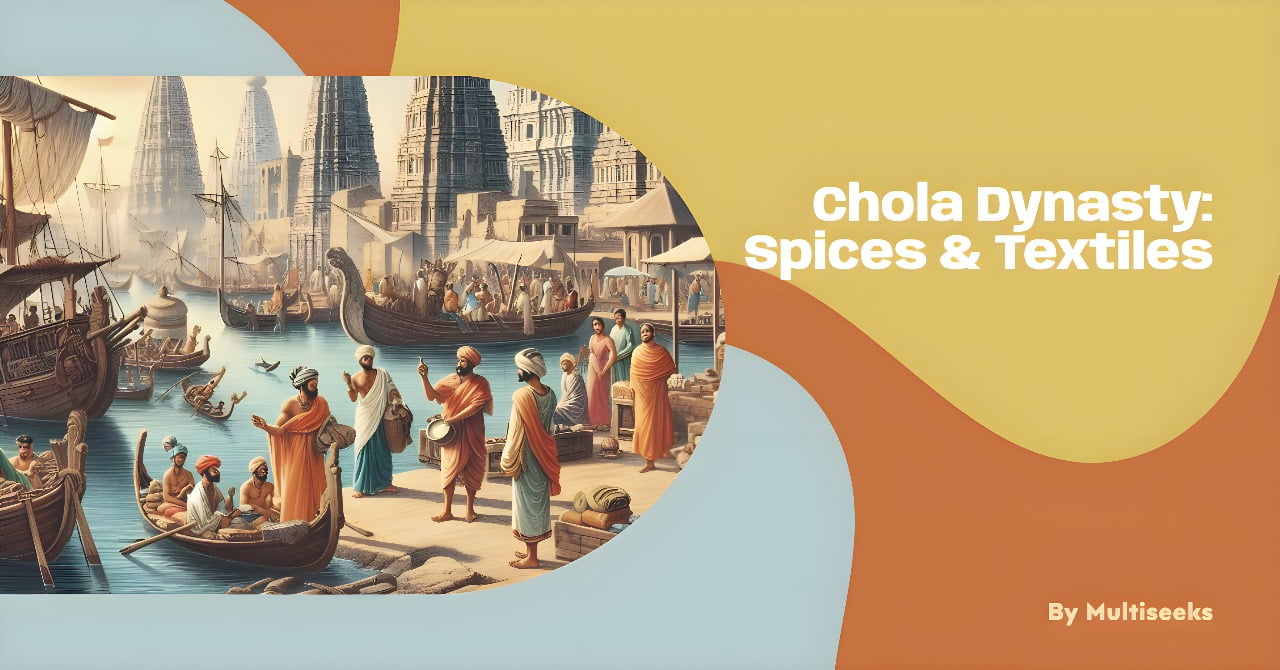Table of Contents
Chola Dynasty: Spices & Textiles as Key Drivers
Imagine a time when spices and textiles held immense power – a time when they not only defined the fabric of society but also shaped the course of history. This captivating era was none other than the Chola Dynasty, an ancient civilization that flourished in Southern India from the 9th to the 13th century. In this blog post, we will delve into the incredible influence of spices and textiles during the reign of the Cholas.
The Chola Dynasty: A Glimpse into the Past
Before we immerse ourselves in the realms of spices and textiles, let’s take a moment to understand the grandeur of the Chola Dynasty. The Cholas, known for their administrative prowess and naval power, were not only valiant warriors but also avid patrons of art, culture, and trade. They ruled over a vast territory, stretching from modern-day Tamil Nadu to Sri Lanka, Myanmar, and even parts of Southeast Asia.
Spices: A Journey of Aromas and Flavors

Spices, with their enticing aromas and flavours, have enchanted people since time immemorial. In the Chola Dynasty, spices played a vital role not only in culinary traditions but also as valuable commodities for trade. Pepper, cardamom, cinnamon, and nutmeg were among the prized spices that captured the attention of merchants far and wide.
Pepper: The King of Spices

Pepper, often referred to as the “King of Spices,” was the crown jewel of the Chola Dynasty’s spice trade. The Cholas had a firm grip on the pepper-producing regions of Kerala and Tamil Nadu. With their vast networks and efficient trade routes, they established a monopoly on the pepper trade, making it one of their most significant sources of wealth. From Europe to the Middle East, pepper from the Chola Dynasty was highly sought after for its superior quality.
Cardamom: The Fragrant Treasure

Cardamom, with its sweet and warm aroma, was another prized spice during the Chola Dynasty. The fertile lands of the Western Ghats provided the perfect conditions for cultivating this fragrant treasure. It was not only used as a spice but also as a medicinal herb, with its therapeutic properties being highly valued. The Cholas recognized the potential of cardamom as a lucrative trade commodity and ensured its widespread distribution across their vast kingdom.
Cinnamon: The Bark of Delight

Cinnamon, derived from the inner bark of trees, possessed a tantalizing aroma that captured the hearts of many. During the Chola Dynasty, cinnamon was a cherished spice, known for its culinary uses and medicinal properties. It was traded extensively, not only within the Chola territories but also with countries such as China and Egypt. The Cholas recognized the value of cinnamon, both as a source of income and a symbol of their luxury.
Nutmeg: The Seed of Riches

Nutmeg, with its warm and nutty flavour, held a special place in the Chola Dynasty’s spice trade. This aromatic spice, native to the Banda Islands in Indonesia, was highly coveted for its culinary and medicinal properties. The Cholas established strong trade connections with the Indonesian archipelago, ensuring a steady supply of nutmeg to their kingdom. The rare and exotic nature of this spice added to its allure, making it a symbol of wealth and prosperity.
Textiles: Threads of Elegance and Prosperity

While spices tantalized the taste buds, textiles adorned the Chola Dynasty with elegance and prosperity. The Cholas were renowned for their mastery of cotton and silk weaving, creating exquisite fabrics that captivated people from near and far.
Cotton: The Preferred Fabric

Cotton played a significant role in the textile industry of the Chola Dynasty. The region’s fertile lands provided the perfect conditions for growing cotton, and Chola weavers skillfully transformed the raw fibres into fine fabrics. Cotton garments were not only comfortable and breathable but also adorned with intricate patterns and designs. The popularity of Chola cotton spread across the Indian subcontinent, and Southeast Asia, and even reached the shores of ancient Greece and Rome.
Silk: Threads of Royalty

Silk, with its lustrous sheen and soft texture, was the epitome of luxury during the Chola Dynasty. The Cholas were pioneers in silk production, with their weavers crafting exquisite silk garments fit for royalty. Kanchipuram, a city in present-day Tamil Nadu, became synonymous with Chola silk, renowned for its superior quality and intricate craftsmanship. The Cholas traded silk not only within their empire but also with foreign lands, establishing a reputation for excellence in silk weaving.
The Legacy of the Chola Dynasty
The influence of the Chola Dynasty extended far beyond its temporal boundaries. The spice and textile trade during their rule shaped the cultural, economic, and social fabric of the region.
Spices introduced new flavours and aromas to the world, creating a global demand that remains strong to this day. The Cholas not only mastered the art of cultivation but also developed efficient trade routes, allowing them to maintain a dominant position in the spice trade for centuries. Their success in the spice industry laid the foundation for the region’s prosperity and influenced the development of diverse culinary traditions.

Textiles, on the other hand, showcased the Cholas’ artistic prowess and sense of style. Chola textiles’ vibrant colours, intricate designs, and fine craftsmanship still inspire contemporary fashion and serve as a testament to their creative genius. The legacy of Chola textiles can be seen in modern-day sarees and traditional garments, which continue to be cherished and embraced by people worldwide.
Conclusion
In conclusion, the Chola Dynasty’s reign was marked by the indelible impact of spices and textiles. The Cholas’ command over the spice trade, with pepper reigning as the king, and their mastery in weaving exquisite fabrics cemented their position as influential rulers and astute traders. The remnants of their legacy continue to enchant and inspire us, showcasing the invaluable role of spices and textiles as key drivers in shaping history.
So, the next time you savour the tantalizing flavours of pepper or wrap yourself in a luxurious silk garment, take a moment to appreciate the profound influence of the Chola Dynasty and the timeless allure of spices and textiles.
want to look into more details on the Chola dynasty then click here
Faqs
Q) What was the main source of income in the Chola dynasty?
A) Trade, especially of spices like pepper, cardamom, cinnamon, nutmeg and textiles like cotton and silk, was the main source of income and power of the Chola Dynasty. Their agriculture produced these prized commodities which were traded extensively.
Q) What was the currency in the Chola Empire?
A) Gold coins called Cholan kasu were used as currency in the Chola Empire. These gold coins featured images of kings like Rajaraja Chola on one side. Cowrie shells were also used for smaller purchases.
Q) What did the Chola dynasty trade?
A) The Chola Dynasty traded extensively in spices like pepper, cardamom, cinnamon, and nutmeg and textiles like cotton and silk. They had established trade monopolies and efficient routes enabling them to become rich and powerful.
Q) What are the taxes of Cholas?
A) Land tax was an important source of revenue for the Cholas. They also collected taxes on commodities, customs duties from traders, tolls from ships sailing to their ports, as well as tributes from vassals and gifts from subordinate rulers.





